Last weekend the Midori Bonsai Club held their 55th annual show at the Quinlan Community Center in Cupertino, California. The venue, the visitors, and even the weather was great for the one day event that featured an exhibit, a workshop, and a demonstration by Peter Tea.
Exhibit trees were primarily arranged on pairs of tables in the middle of the exhibit space. On the far side of the room, informal displays showcased trees in development – a great teaching opportunity for visitors who were new to bonsai.
The most refined trees in the exhibit were impressive. The California juniper below has been in training for many years and is now full and beautiful – one of the best examples of the variety I know of.
California juniper
A slender hinoki bonsai appeared in the recent US National Bonsai Exhibition. The tree has two trunks with gentle movement and evokes the feeling of a much larger tree.
Hinoki
A California live oak made a compelling semi-cascade bonsai. The tree has a great trunk and a full silhouette. Like many oak bonsai, the tree would be even more impressive with more refined branch pads – not an easy task given how oaks naturally grow.
Coast live oak
A tall, slender juniper showed great age in its bark. Although junipers are often stripped of their old bark, the owner of this tree made it a feature that did a great job conveying the tree’s age.
Juniper
I was happy to see a silverberry in the exhibit. The variety is quite malleable and lends itself to cultivation as bonsai.
Silverberry
A rugged procumbens juniper was planted in a large, shallow container. The large pot makes the tree look small – a smaller container would make the tree look bigger.
Procumbens juniper
Below is one of the taller seiju elms I’ve seen. As the variety grows quickly, it’s often used to produce specimens with thick trunks and fast taper. It was nice to see an alternative approach to the variety.
Seiju elm
The exhibit featured several shohin bonsai displays.
Shohin display
Shohin display
A large boxwood took the form of a full-grown tree.
Boxwood
A tall procumbens juniper with a slender trunk appeared in a large oval pot. I’d like to see the tree in a slightly smaller and more shallow round pot. As the tree has a light feeling, I’d like to see a similar feeling in the tree’s container.
Procumbens juniper
I’d like to thank everyone who visited the exhibit and stopped by the vendors’ area to say hello – it was great to see you!
Bonsai Program List Available
Looking for program ideas for your club or bonsai event? I regularly speak at a variety of events and have prepared a resource outlining some of the more popular programs I present. Broad topics include Bonsai Display, Bonsai Fundamentals, and Black Pine Bonsai. Learn more at Bonsai Programs.
Subscribe to Bonsai Tonight
New Posts Delivered Every Tuesday and Friday
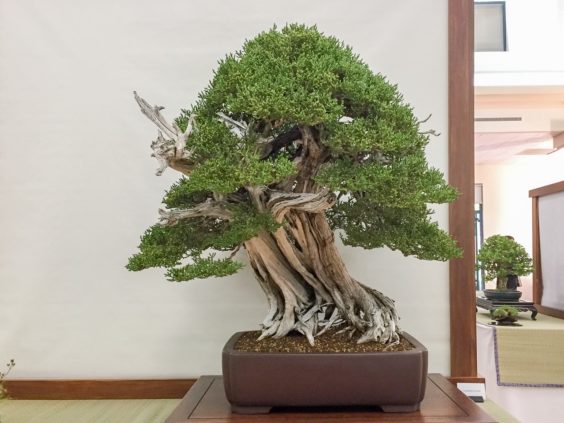
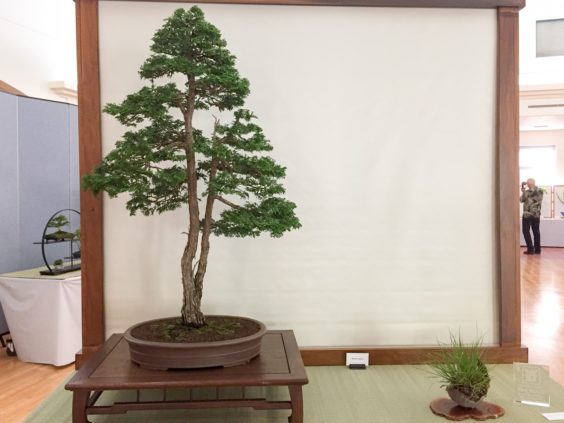
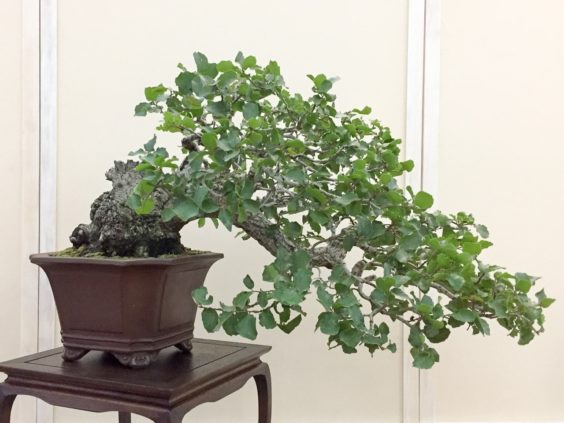
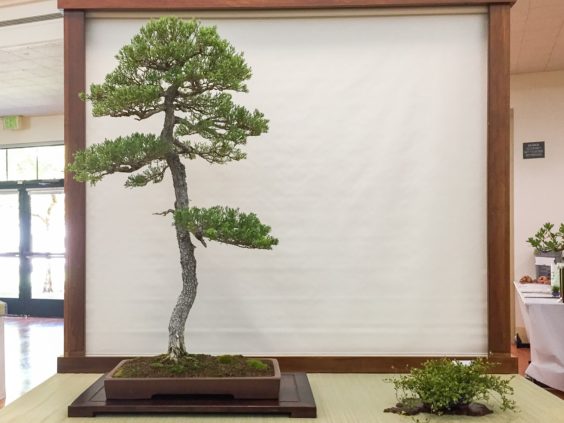
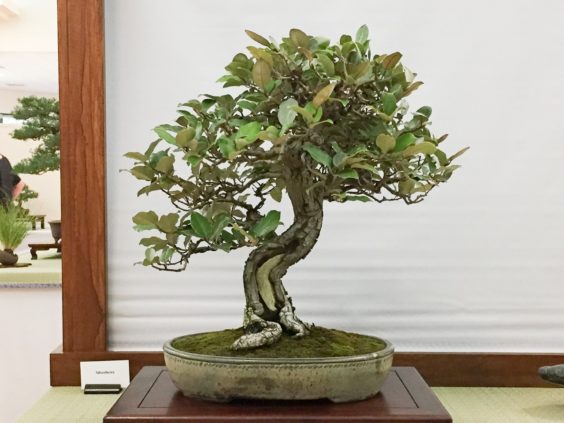
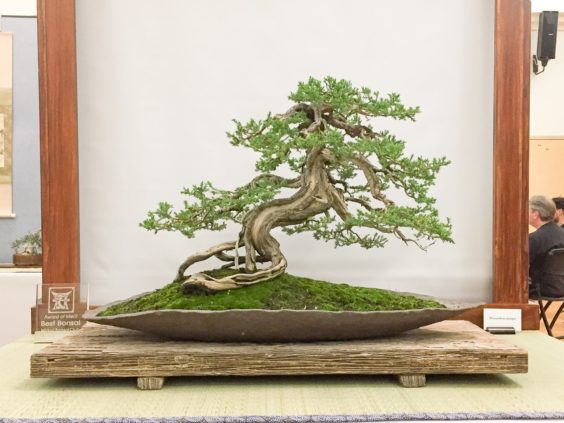
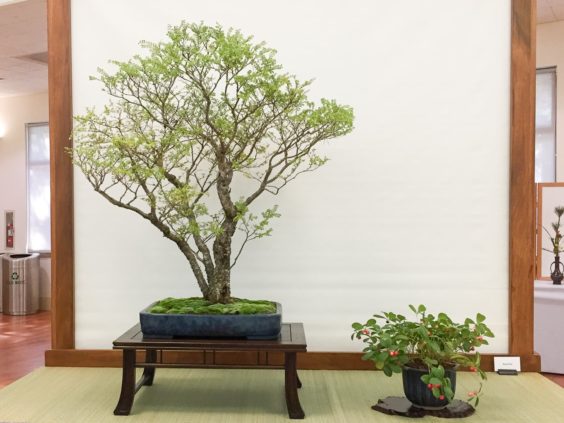
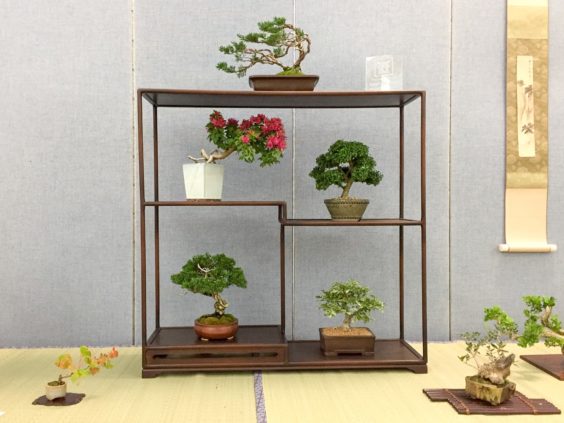
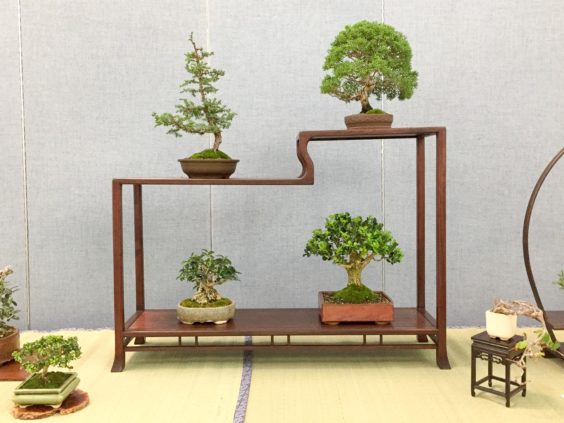
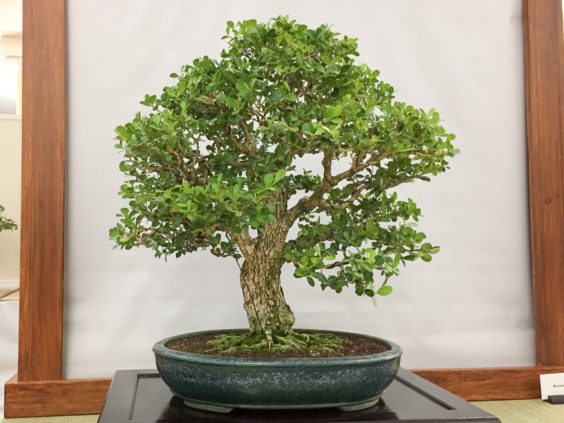
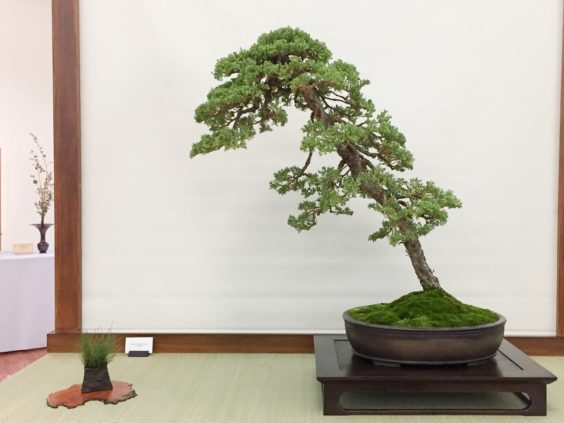
Duncan says
Why would it be an improvement to have more defined pads on an oak?
Jonas Dupuich says
Hi Duncan – good question. The desire for better defined branch pads is somewhat of a style preference. I like well-developed pads as they can convey age and contribute to the tree’s overall appearance. I also think it’s challenging to develop pad-like structure in oaks – am very curious to see what can be done with the variety.
Chris says
Saw that hinoki in Rochester and was really impressed, very beautiful tree. Also like that tall juniper quite a bit, elegant. Thanks for sharing these.
Scott says
I love the California Juniper, it’s beautiful. To me the pot seems a little small?
Jonas Dupuich says
It looks a little small in the photo but I didn’t notice it at the show. It could be that a different style pot would have a different feeling, even if the size was the same.